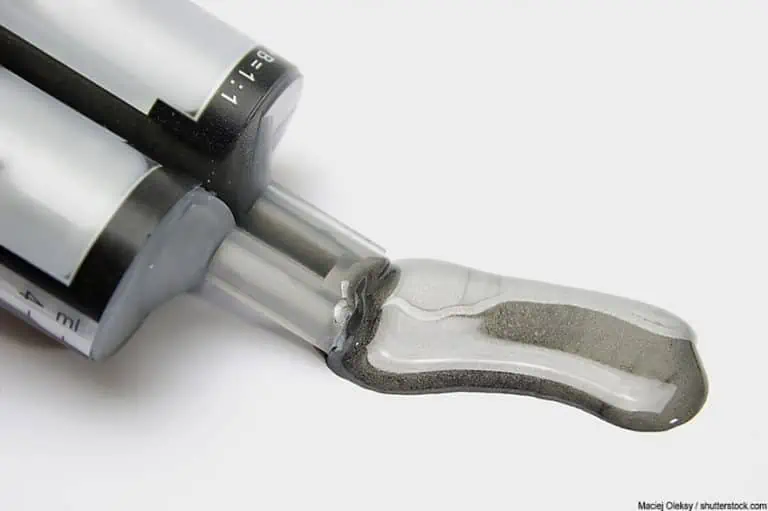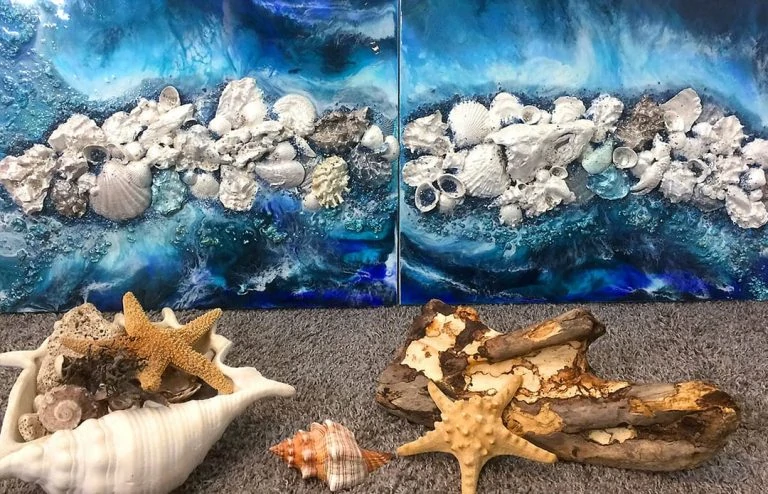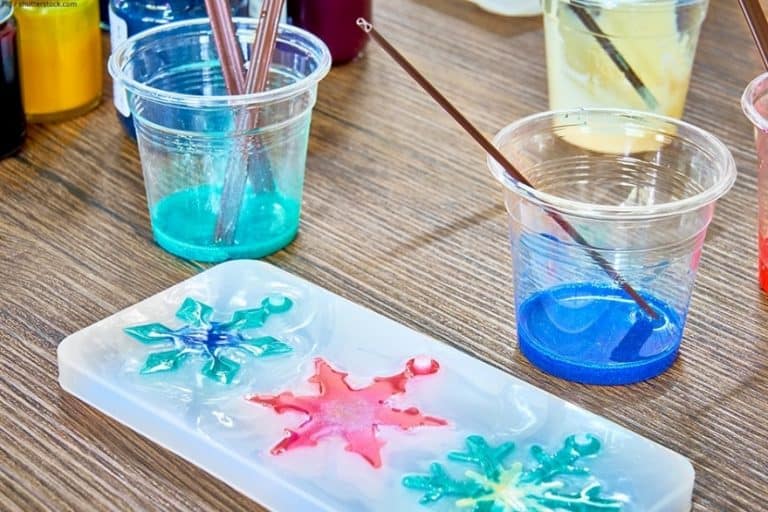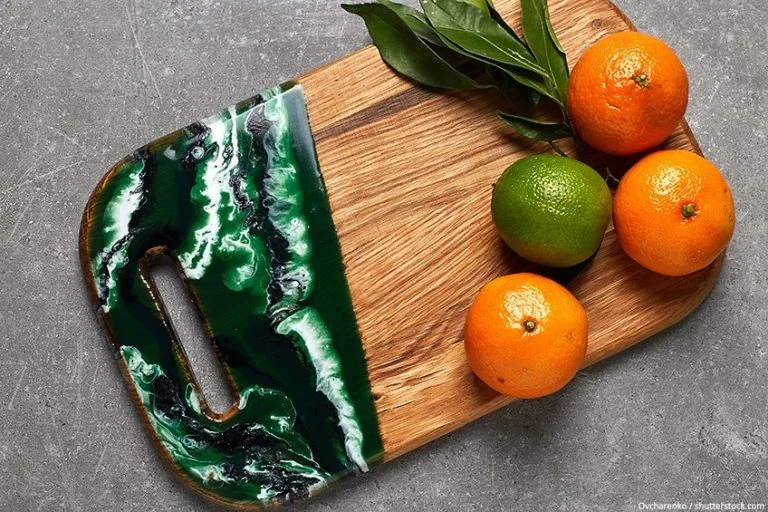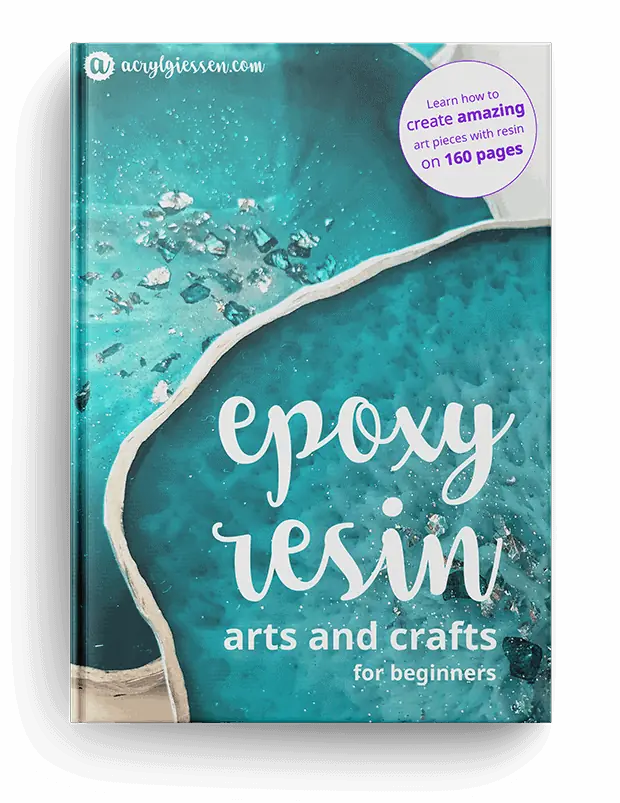Casting Resin – Find the best Casting Epoxy for your Projects
This post may contain affiliate links. We may earn a small commission from purchases made through them, at no additional cost to you.
For the hobby and art sector there is a wide variety of different epoxy resin products available today. Their properties may well differ considerably, since cast resins are usually designed with a focus on very specific properties. In this almost impenetrable jungle of choices, we would like to give you the following guide to help you choose the product that best suits you. Here you can find out in a clear and concise manner for which applications you can use casting resin and which factors deserve special attention if you want to buy the most suitable casting resin for your project.
Table of Contents
- 1 Choosing Casting Resin for every Purpose – Our buying Guide
- 2 Which Casting Resin is the best for your Project?
- 3 Casting Resin vs. Laminating Resin – the Differences at a glance
- 4 Short Video Tutorial on how to Resin Casting
- 5 Casting Resin can be Colored
- 6 The Problem with the Layer Thickness of Epoxy Resins
- 7 Duration of Curing: Casting Resin requires Patience
- 8 For which Projects is Casting Resin particularly suitable?
- 9 With these Instructions, Projects with Cast Resin are successful
- 10 Tips for Casting Resin with really crystal clear Transparency
- 11 How to color Casting Resin?
- 12 Surface Hardness: Casting Resin vs. Laminating Resin
- 13 Overview: Important Information for working with Casting Resin
- 13.1 Drill Holes in Cast Resin and Epoxy Resin
- 13.2 Grinding of Synthetic Resin Surfaces: the different Possibilities
- 13.3 Polishing Casting Resin Surfaces
- 13.4 What Possibilities are there for Air Inclusions in Resin?
- 13.5 How are the Components of Casting Resin weighed and mixed?
- 13.6 Work with Casting Resin bears Risks
Choosing Casting Resin for every Purpose – Our buying Guide
Resin casting resin is a synthetic resin with a rather thin consistency, which must first be mixed from two individual components before the actual processing. In this process, the actual resin is mixed with a hardener specifically adapted to it. The mixing of resin and hardener sets off a chemical transformation, which first of all releases heat. In addition, this reaction also allows the initially liquid resin to harden within a certain period of time.
Casting resin is so popular for a wide variety of art, DIY and handicraft projects because it initially has a relatively low viscosity. This allows the casting resin to flow even into very narrow cavities and small gaps. However, the very low-viscosity casting resin needs all the longer to cure completely. Cast resin products with their special properties are usually purchased for very specific projects for which they are the optimal material.

Which Casting Resin is the best for your Project?
Even with a short research you will find out that nowadays you can find synthetic resins in a quite considerable range of manufacturers and product variants, both at specialized dealers and on the Internet.
However, it may seem somewhat complicated by the fact that the various synthetic resins are sometimes sold under very different names. Therefore, it can also be somewhat difficult to distinguish casting resins suitable for certain applications from other epoxy resins without confusion.
However, we have a helpful tip at this point: epoxy resins optimized for coatings are often sold as topcoats, laminating resins or gelcoats with regard to possible applications. With our advice, we would like to protect you from making a bad buy, because otherwise, you could end up with a really expensive purchase. Especially if the wrong resin is used, which wastes not only time but also possibly various materials.
In order to make it easier for you to purchase the resin that is best suited to your project, we have summarized our selection of the best casting resins currently available for you below:
- Designed for pouring over 3/4'' per pour
- Super clear results, compatible with pigments and dyes
- Ideal for epoxy tables and deep resin molds
- 2 : 1 mix ratio by volume (100 A to 44 B by weight)
- Thick pours up to 2" per application, low viscosity and long working time
- Super clear results, compatible with pigments and dyes
Casting Resin vs. Laminating Resin – the Differences at a glance
Epoxy resins / laminating resins differ from casting resins in these points:
Casting Resin
- has a rather thin consistency (low viscosity)
- it hardens relatively slowly and offers a correspondingly longer working time
- thicker layers can be cast in one operation than with epoxy resin
- differently colored layers mix faster with each other due to the lower viscosity
Laminating Resin or Epoxy Resin
- in contrast to cast resin is highly viscous, i.e. rather thick
- cures much faster than casting resin
- so you need to process it faster
- with about 2 cm the maximum layer thickness that can be processed per casting process is quite low
- interesting effects can be achieved, as differently colored parts of the resin can be easily separated
Short Video Tutorial on how to Resin Casting
Casting Resin can be Colored
Similar to epoxy resin, you can also color cast resin with different colors. You should only use suitable coloring agents such as color pastes, powdered pigments, high-quality alcohol inks or color concentrates specially produced for resin. If you would like to learn more about this topic, you will find detailed instructions on how to do this in our own guide to coloring epoxy resin.
Since cast resin is by far not as viscous as the epoxy resin used as laminating resin, cast resin is also referred to as low viscosity. Therefore it can happen that differently colored material layers are mixed together faster than desired and cannot be separated from each other as well as epoxy resin layers. This circumstance does not necessarily have to become a problem, but with resin art, it often depends on being able to separate the individual colors from each other really well and to control their course on the work of art.
At a later point in this guide we will introduce you to various color variations in more detail and in the course of this we will also present you the best products on the market suitable for resin casting resin.

The Problem with the Layer Thickness of Epoxy Resins
Every time a synthetic resin hardens, heat is basically released and radiated due to the chemical reaction that takes place. Now, casting resins usually cure much slower than most epoxy resins. This means that the heat generated does not accumulate in the material as much as would be the case with the faster curing laminating resins. For working with casting resin as a design material, this is definitely an advantage, as casting resin can thus be processed in layer thicknesses of up to 4 inches in a single operation without significant quality problems and difficulties.
It is also much less problematic with the maximum amount of material that can be processed simultaneously. This is significantly higher for cast resin than for epoxy resin and can be estimated at around 10 kg of material per working cycle for most products. But to be on the safe side, you should take a close look at the manufacturer’s information on the products you use before you start working with these materials. There are some casting resins whose maximum layer height per casting process is only about 2 inches.
 Resin Casting of a Letter with Alcohol Inks by Sandra Rettich
Resin Casting of a Letter with Alcohol Inks by Sandra Rettich
You should always keep the aspect of heat generation in mind when working with synthetic resin. If you proceed too carelessly and apply a thick layer of casting resin in a single operation for reasons of time or convenience, the chemically reacting mass can become extremely hot, just like when mixing large quantities in a vessel.
The result of such rapid heat development can sometimes be burns or at least quality problems in the finished end product. This can even go so far that the casting resin becomes completely unusable and unsightly. In addition to these visible quality defects, the development of harmful vapors is also quite possible. Therefore, when working with resin casting resin and other synthetic resins, you should always wear suitable protective clothing, including a specially designed breathing mask, to prevent possible health hazards.
Duration of Curing: Casting Resin requires Patience
Colored or transparent casting resin can take considerably longer to cure than other synthetic resins. With some resin casting resins, it can take up to a week until the material is completely cured. However, this should not only be seen as a purely negative factor, as it also results in a correspondingly longer processing time.
After all, with many epoxy resins it can be quite stressful if the usual processing times are only between a few minutes and an hour. In comparison, it seems like a little luxury that you can buy casting resin for many purposes, which can offer you a processing time of up to 24 hours. This gives you the following advantages:
- when working on large surfaces, artifacts can first be brought into position at rest before they are poured into the casting resin
- you can also color large quantities of casting resin in different color directions without excessive time pressure and process them in a relaxed manner
- air bubbles trapped in the material can rise better and escape from the casting resin during the longer phase until complete curing
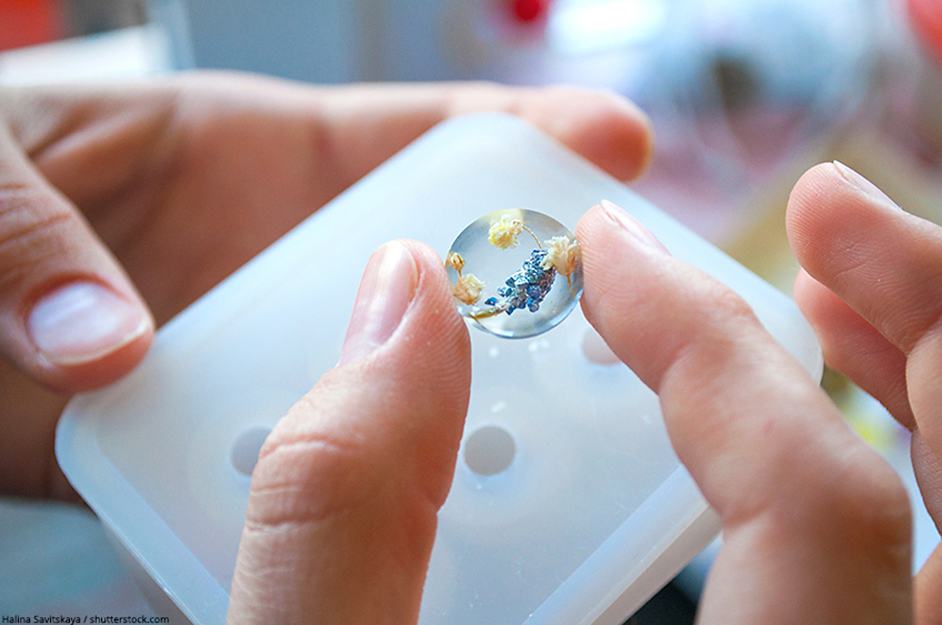
The bottom line is that when working with cast resin you not only need a little more patience, but you can also benefit from the positive aspects of the longer curing phase. Of course, this applies more to some projects than to others. In the final analysis, when planning specific projects, you should first clarify what properties the resin used should offer for the best possible result.
If, for example, the project is complex and requires a long time for the individual processing steps, a casting resin with a correspondingly long processing time could be perfectly suited for this.
For which Projects is Casting Resin particularly suitable?
In order to avoid unpleasant surprises during the processing or after the completion of a project, you should always choose your material very carefully and thoughtfully in advance. With cast resin in its different variants you are usually well-advised for the following types of projects:
- in the production of impressive cast resin tables / River Tables
- when making cast resin jewelry
- for the casting of cast resin figures in suitable silicone molds
- in the manufacture of epoxy resin lamps
- when casting various objects in resin
- for filling cracks in wood with epoxy resin
- Combination of wood with resin
- when casting molds/resin casting

With these Instructions, Projects with Cast Resin are successful
Preparation of Material and Workplace
- Before the actual start of work, the materials required for your project should first be clearly laid out so that everything necessary is within reach, even under time pressure.
- A protective underlay of plastic foil or cardboard at your workplace prevents contamination and damage to various material surfaces and also makes it easier to clean up later.
- Before filling cavities in wood or similar materials with resin casting resin you should first mask the holes. In this way you can prevent the casting resin you use from emerging from holes in surprising places or moving into unwanted areas after filling. If you have not yet gained much practical experience with projects of this kind, you are regularly surprised at the ways in which the very thin-bodied casting resin sometimes moves.
- Before casting objects in casting resin or pouring out the cavities of wooden workpieces, the surfaces should first be sealed with a thin layer of epoxy resin. Transparent cast resin benefits greatly from this intermediate step in terms of its later appearance, as it creates more beautiful transitions between materials and also reduces the formation of air bubbles in the resin.
- The preparation of any project with cast resin also includes reading the manufacturer’s instructions for use of the purchased product. These usually also contain concrete information on the optimal mixing ratio, which you should keep to as exactly as possible. You will also usually find instructions on how to use the product safely.
- In order to protect your health against possible dangers from the materials used, you should only process casting resin in compliance with all relevant protective measures. First of all, you need a workplace that is as spacious as possible and can be well ventilated. However, you should also wear protective clothing consisting at least of safety goggles that surround the eyes well, a respiratory mask suitable for this purpose and nitrile gloves that are as good as new or at least undamaged.
How to mix the Casting resin Optimally
- first you should weigh the two components (casting resin and matching hardener) in the mixing ratio according to the manufacturer’s recommendation
- then mix the two components carefully and as evenly as possible for a few minutes
- if you do not want to use transparent casting resin in a crystal clear form, you can now add suitable color pastes or pigments before stirring again
- in a short resting phase of several minutes you give the mixed mixture the opportunity to let air bubbles in the material (at least partially) rise and escape by themselves
- then carefully pour the finished mixture into your prepared casting mold or into the recess in your workpiece
- for the clearest possible appearance, you can now let the remaining air bubbles rise carefully by gently heating the mixture at their destination (assuming the other materials are temperature-resistant) with a hot-air dryer or a Bunsen burner.
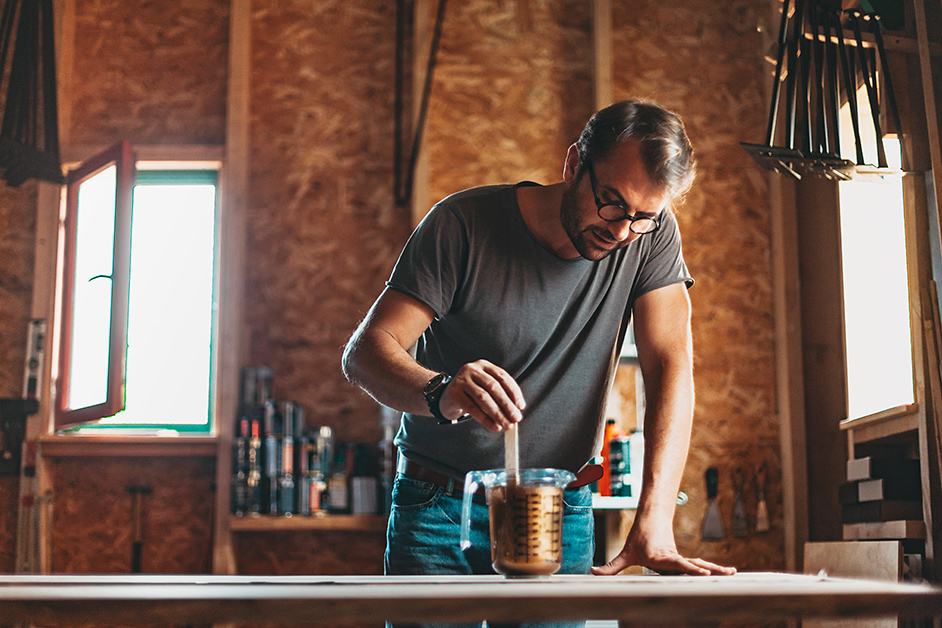
Casting Objects in Casting Resin
- In order to be able to enclose objects of different kinds in the resin, a smaller portion of the total resin quantity should first be filled into the prepared mold.
- The second step is then to position the respective object in the best possible way on the resin already poured into the mold using wooden spatulas or toothpicks.
- In this case, objects with a certain weight would sink naturally into the casting layer applied first. You should therefore give the first casting layer enough time to harden and dry. As soon as the first layer is almost cured and thus somewhat more stable, the desired object can be placed on it for further casting.
- In the last step, the mold is then filled with the remaining amount of the used resin casting resin. As a certain shrinkage of the resin used during the curing phase is usually to be expected during such work, it is always better to fill a little more casting resin into the mold in case of doubt.
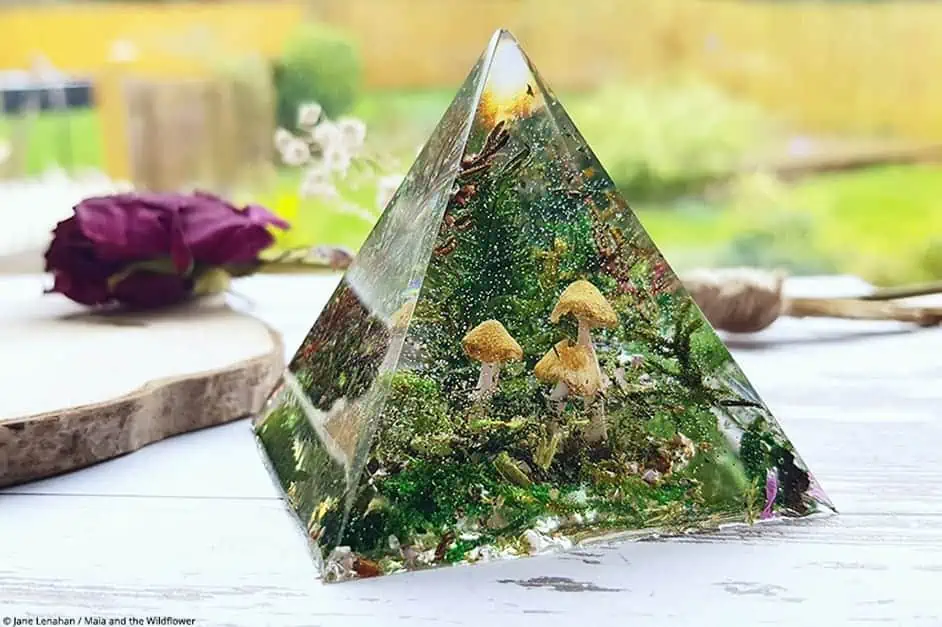
Tips for Casting Resin with really crystal clear Transparency
While for some projects the casting resin is colored in a color of your choice, in most cases it should cure in an unaltered and crystal clear transparency. You should be able to do the same with your projects if you follow these tips as strictly as possible:
- choose the highest possible quality cast resin variants from proven brand manufacturers
- the casting resin used should have a high-quality UV filter
- adhering as closely as possible to the recommended mixing proportions according to the manufacturer’s specifications promotes a crystal-clear result
- the transparency of the cured material is even better (and more durable) if it is coated with a varnish with UV filter immediately after curing
Attention: Even if you follow all the above advice, it can unfortunately never be guaranteed that transparent casting resin will not yellow to a certain extent over time. Unfortunately, this is particularly the case when the material is exposed to weathering influences such as UV light and moisture. These factors can significantly accelerate and intensify the clouding or yellowing of transparent casting resin.

How to color Casting Resin?
Immediately after mixing the two components (resin and hardener), various types of colorants can be added to a cast resin while it is still liquid in order to obtain objects with specific color effects instead of the transparent, clear resin. At this point it is very important that you only use dyes that are really suitable for use in combination with casting resin.
Special Colorants for Casting Resin
In specialist shops and at well-assorted dealers for casting resins on the Internet, you will find a whole range of different colors which, due to their specific properties, are extremely suitable for coloring casting resins and other synthetic resins. We have already presented our top recommendation in this product area elsewhere: This is the product marketed by the manufacturer ArtResin with the sonorous name ResinTint.
Coloring Cast Resin with Pigment Powder
Pure pigment powder can be used very well for coloring casting resins. But you have to pay attention to something during the processing: Do not mix the pigment powder after the two components have been combined, as is common practice with other paints. You will get much better results if you first mix the pigment powder with your resin casting resin and only then add the appropriate hardener. When coloring cast resin with pure color pigments, a clearly perceptible color effect can usually be achieved even with very small quantities.
In the meantime, there is a very large selection of different color pigments on the market. At well-assorted retailers you will find a huge range of different color variants from matt color variants to metallic shiny color nuances. We would like to point out at this point that one should not be too much influenced by the price when selecting pigments for coloring cast resin. In this case, it can certainly pay off to use rather high-quality products from renowned manufacturers. These can convince with a color intensity, uniform coloring effect and above all light resistance which cannot normally be achieved with significantly cheaper product variants. All the more worthwhile are the efforts associated with the production of decorative objects from cast resin: The high-quality color pigments can ensure that your self-produced works of art do not fade in color even after long periods of time, but can convince with intensive color tones.
Alcohol-based Ink: Alcohol Inks
The special thing about the so-called alcohol inks is that they can be used very sparingly in terms of quantity. This is because they are very highly concentrated and each individual milliliter contains a large number of color pigments. This also means that the mixing ratio of the cast resin components is not too much distorted by the color admixture. Most of the time you only need a few drops of Alcohol Ink to color the casting resin for your project in the desired color. The same recommended quantity also applies to water-based color inks and not only to alcohol inks.
However, we would also like to draw your attention to possible disadvantages associated with the use of alcohol inks: This is because their use can sometimes cause problems with light resistance. If the objects you make from cast resin are later regularly exposed to UV light, alcohol inks may not be the best choice for coloring the cast resin. This is difficult because Alcohol Inks can be used to create very specific color effects, as in the production of the impressive Petri Art Dishes. Unfortunately, there is not yet a more light-resistant alternative that can achieve the same great effects as with alcoholic ink.

Use Airbrush Paint for Coloring Casting Resin
The generic term airbrush paint basically refers to all different types of paint that are suitable for use in various airbrush techniques due to their composition and properties. Paints of this type are almost exclusively water-based, but in addition to water-based paints, there are also acrylic paints available in the assortment of specialist retailers.
The difference between these paints and other acrylic and water paints lies in their different structure and possible uses: airbrush paints not only have particularly finely structured color pigments, but also a carrier medium with maximum flowability. Furthermore, these colors can also be mixed very well with other materials. With their high luminosity, a very intensive color effect can be achieved when coloring cast resin.
However, the flip side of these positive characteristics is noticeable in the price if you want to buy the colors in addition to the highest quality casting resin: Airbrush paints are unfortunately not very cheap and are considerably more expensive than many other water or acrylic paints.
Surface Hardness: Casting Resin vs. Laminating Resin
In general, it can be said that the surfaces of fully cured objects made of epoxy resins are usually much harder than the surfaces of objects made of cast resins. However, this circumstance does not necessarily mean a qualitative disadvantage for the use of casting resins for different projects. After all, it can sometimes even be advantageous if the material has at least minimal flexibility even after curing. After all, it can adapt to other materials such as glass or wood in this way, so that no undesirable stresses occur between the casting resin and cast objects made of other materials.
Casting resin is processed together with the natural material wood in many projects. This is subject to fluctuations in its volume under different environmental conditions. Depending on the temperature situation and current humidity, wood can either expand or shrink. When planning a project, we, therefore, recommend careful consideration of which material is really best suited to the project in question. This also includes whether the resin used should necessarily be very hard or somewhat softer.
For example, an epoxy resin table or other objects that are subject to heavy mechanical loads in everyday life are usually given a protective coating of laminating resin. This ensures a particularly hard and correspondingly abrasion-resistant seal, so that scratches cannot even occur to the same extent as with objects made purely of cast resin. But you don’t have to use epoxy resin for the whole object. Rather, you first use casting resin for casting wood in order to benefit from its lower hardness in combination with wood. However, you can take advantage of the hardness of the epoxy resin or laminating resin by applying a protective surface coating as a sealant.
- Cures in 24 hours, self-leveling
- Heat resistant up to 425°F, crystal clear and UV stable
- Scratch-resistant, food-safe, zero VOC's

Overview: Important Information for working with Casting Resin
Drill Holes in Cast Resin and Epoxy Resin
Since epoxy resin in particular is really very hard after complete curing, it is not so easy to drill. So if you still want to drill clean and nice holes in this material, you have to use the right drill bit for it anyway. We can recommend HSS drills as a relatively inexpensive alternative for drilling holes in cured epoxy resin and cast resin. However, the material of these drills can become relatively dull after only a few uses. In contrast, carbide drills are manufactured from a material alloy consisting of about 90 % tungsten carbide and about 10 % cobalt. This combination proves to be much harder and also more temperature resistant. At the same time, the drills are also somewhat more brittle due to this choice of material. If you want to drill holes in epoxy resin or cast resin objects regularly or in larger numbers, you should use carbide drills.
Grinding of Synthetic Resin Surfaces: the different Possibilities
Epoxy resin and cast resin can be processed with dry or wet grinding. When wet sanding, one usually puts one’s hand on the resin surface manually, because electric sanders in combination with water pose too great a safety risk with regard to short circuits or similar malfunctions. For wet sanding, you need a sanding block made of hard rubber and suitable wet sanding paper. When sanding, you then work your way from a coarse to a fine grain of sandpaper by finishing the surfaces in circular movements. Even sharp edges can be easily removed during the production of Epoxy River Tables.
Polishing Casting Resin Surfaces
Sometimes, in projects with cast resin or epoxy resin, the surfaces may appear dull, matt or even rough after curing. Such problems can have various reasons and can be related, for example, to the choice of materials or the casting molds used. However, they do not pose too great a problem either, as cast resin surfaces can be polished to a high gloss in most cases relatively easily. If larger surfaces are to be polished to a high-quality, we recommend the use of special polishing paste in combination with an electrically driven polishing machine. With it, even larger surfaces can be polished to a high gloss in a very short time.
Of course, a different approach is required when polishing transparent casting resin in the form of small pendants and other objects cast in molds. You can use a drill in a drill stand for this. This way you can easily hold the workpieces to be processed in your hands and can also bring curved shapes to a high gloss simply and flexibly with the matching polishing attachment.
What Possibilities are there for Air Inclusions in Resin?
Whether you use casting resin or epoxy resin in your projects, air bubbles in the material can always be a more or less tedious problem. Now it is basically natural that epoxy resin is usually applied in much thinner layers, which makes it easier for trapped air to escape.
This does not mean, however, that thicker layers of casting resin are more problematic in terms of air inclusion. After all, the pot life of cast resin is much longer during which the material can be processed and only hardens relatively slowly. Consequently, the air bubbles also have much more time during which they can rise to the surface. As soon as they reach the surface of the still somewhat liquid material, they burst by themselves. If this is not the case, you can help by carefully warming up selectively with a Bunsen burner or a hot air dryer.
However, we would also like to give you a helpful tip with which you can prevent the formation of air bubbles when casting relatively thick layers of casting resin: After all, air bubbles often form in the resin when the resin meets porous wooden surfaces and the air escapes from the natural material into the casting resin. To prevent this effect, you can simply coat such porous surfaces with a thin layer of epoxy resin in advance. When the epoxy resin has cured to a large extent, no more air bubbles can escape into the casting resin applied later.
This trick also works if you want to embed certain objects in the casting resin. In general, a sealing with a laminating resin should always be considered for wooden parts, so that only a very small number of air bubbles can develop from the beginning.

How are the Components of Casting Resin weighed and mixed?
For a complication-free processing and an aesthetic final result, the mixing ratio between resin and hardener recommended by the manufacturer should be adhered to as exactly as possible. In order for you to do this as well and as uncomplicated as possible, we recommend the use of a digital scale in a modern design.
However, there are also cast resin systems that are based on a calculation of the mixing ratio according to the volume of the two components. In the latter case you can simply use a suitable measuring cup to measure the respective quantities.
Work with Casting Resin bears Risks
Once synthetic resins are fully cured, they are largely harmless or sometimes even food-safe. However, the processing does present certain risks if basic security measures are not respected. Liquid casting resin or the components used for mixing should therefore never come into direct contact with the skin, which is why we recommend that you wear long clothing even in summer.
In addition, you should also wear nitrile gloves that are as intact as possible when handling the casting resin or its components. With safety goggles that surround your eyes well, you can protect your eyes from dangerous injuries in case of an accident. In addition, your workplace should of course be as well ventilated as possible so that the by no means harmless exhalations of the material do not pose a danger. Nevertheless, even in a well-ventilated workplace, an effective breathing mask should still be worn as a precautionary measure.
In 2005, Charlene completed her wellness degrees in therapeutic aromatherapy and reflexology at the International School of Reflexology and Meridian Therapy. She worked for a company offering corporate wellness programs for several years before opening her own therapy practice. In 2015, she was asked by a digital marketer friend to join her company as a content creator, and it was here that she discovered her enthusiasm for writing. Since entering the world of content creation, she has gained a lot of experience over the years writing about various topics such as beauty, health, wellness, travel, crafting, and much more. Due to various circumstances, she had to give up her therapy practice and now works as a freelance writer. Since she is a very creative person and as a balance to writing likes to be active in various areas of art and crafts, the activity at acrylgiessen.com is perfect for her to contribute their knowledge and experience in various creative topics.
Learn more about Charlene Lewis and about us.






